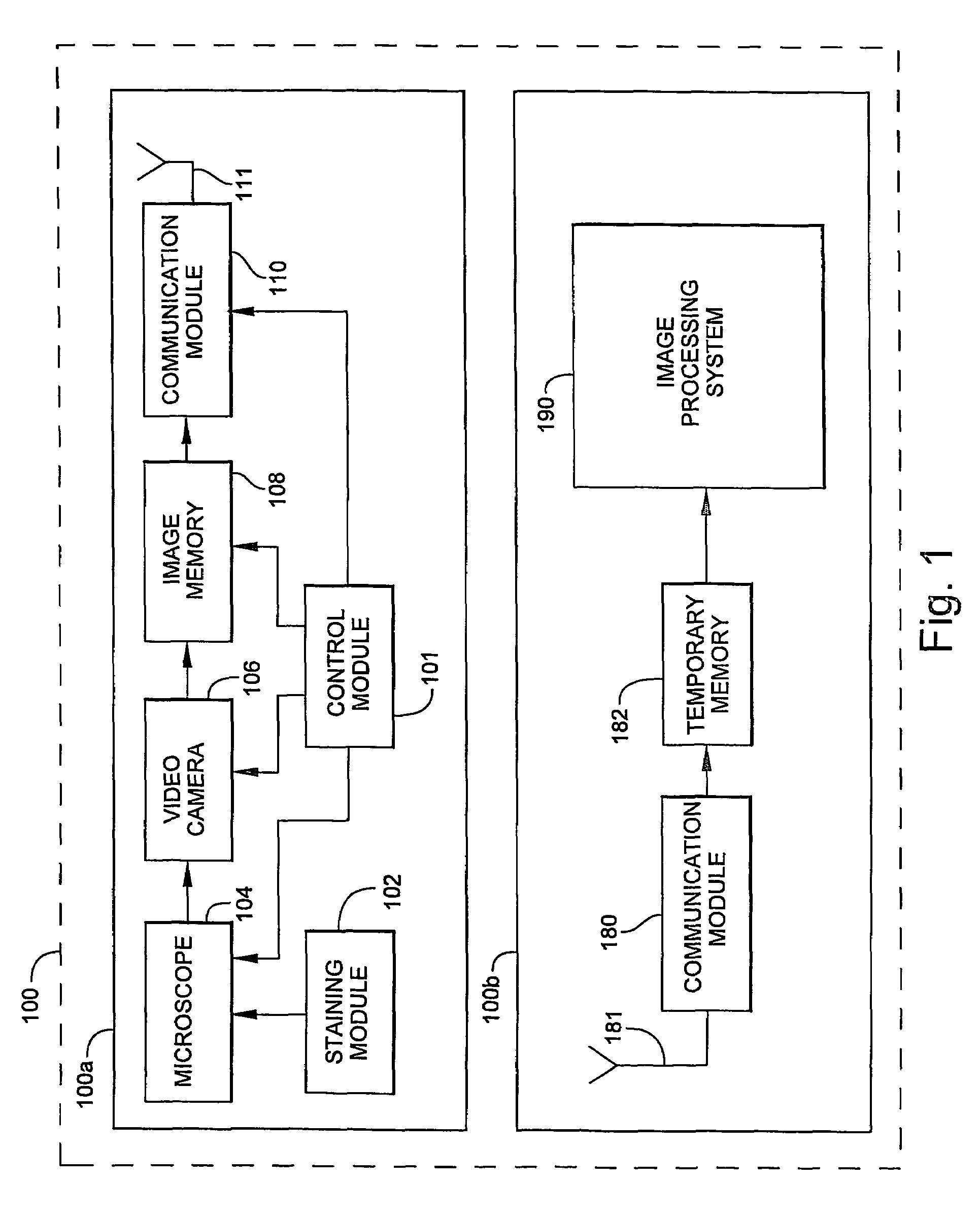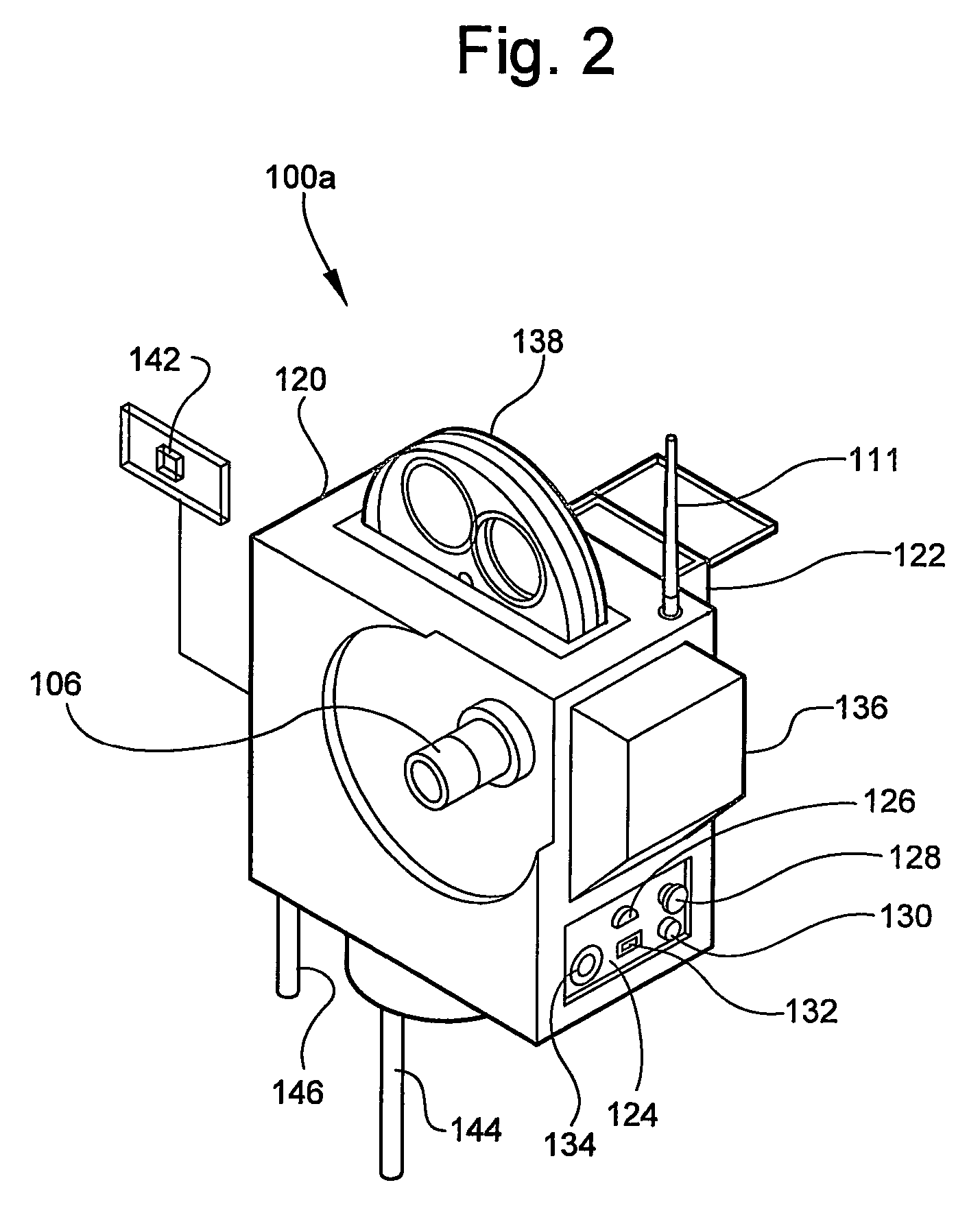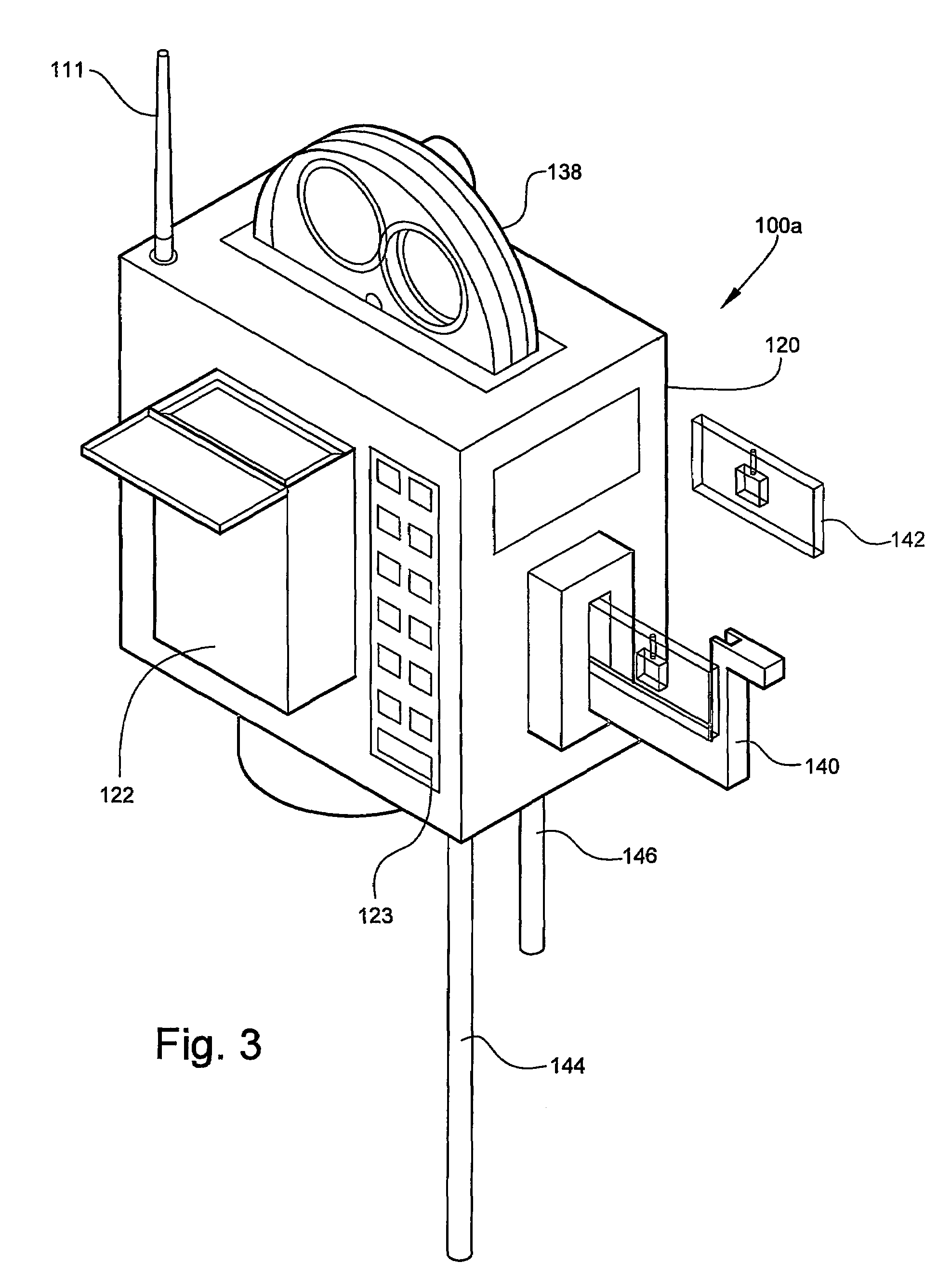System and method for rapidly identifying pathogens, bacteria and abnormal cells
a technology of abnormal cells and pathogens, applied in the field of system and method for identifying pathogens and abnormal cells, can solve the problems of time-consuming and laborious diagnosis of pathogens, bacteria, abnormal cells and infectious diseases, and the detection of bacterial contamination in food is similar, and achieves automatic accurate identification, and rapid identification of pathogens.
- Summary
- Abstract
- Description
- Claims
- Application Information
AI Technical Summary
Benefits of technology
Problems solved by technology
Method used
Image
Examples
Embodiment Construction
[0019]Referring to FIG. 1, there is shown a block diagram of a system for rapid identification of pathogens, bacteria and abnormal cell structures in accordance with the invention. System 100 generally comprises imaging subsystem 100a and image management diagnostic subsystem 100b. Subsystem 100a generally comprises computer or controller 101, staining module 102, microscope 104, digital color video camera 106, image memory 108 and communications module 110. As will be apparent from the ensuing description, computer 101 controls the operation and the sequence of operation of microscope 104, digital color video camera 106, image memory 108 and communications system 110.
[0020]Referring to FIG. 1, staining module 102 stains the slides of specimens of pathogens, bacteria and abnormal cells that are affixed to slides. The slides are stained prior to being viewed with microscope 104. In a preferred embodiment, staining module 102 is a commercially available immune staining procedures modu...
PUM
| Property | Measurement | Unit |
|---|---|---|
| optical recognition algorithm | aaaaa | aaaaa |
| optical recognition | aaaaa | aaaaa |
| bacterial resistance | aaaaa | aaaaa |
Abstract
Description
Claims
Application Information
 Login to View More
Login to View More - R&D
- Intellectual Property
- Life Sciences
- Materials
- Tech Scout
- Unparalleled Data Quality
- Higher Quality Content
- 60% Fewer Hallucinations
Browse by: Latest US Patents, China's latest patents, Technical Efficacy Thesaurus, Application Domain, Technology Topic, Popular Technical Reports.
© 2025 PatSnap. All rights reserved.Legal|Privacy policy|Modern Slavery Act Transparency Statement|Sitemap|About US| Contact US: help@patsnap.com



